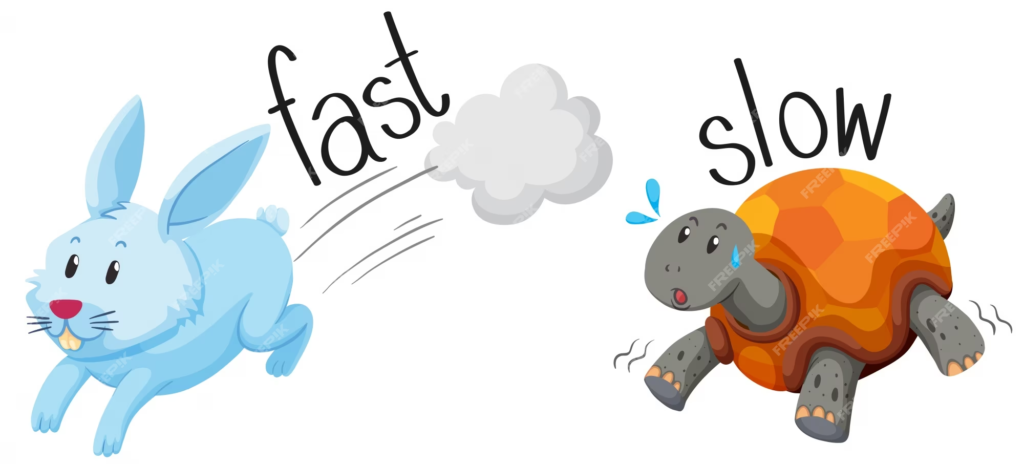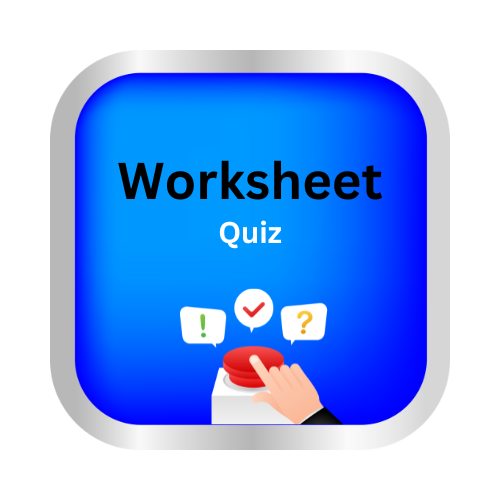Slow Or Fast
Key Notes :

Definition of Speed:
- Speed refers to how quickly or slowly something moves.
- The unit of speed is usually meters per second (m/s) or kilometers per hour (km/h).
Measuring Speed:
- Speed is calculated using the formula:
Speed = Distance ÷ Time - This helps to understand how far an object moves over a given period.
Comparing Slow and Fast Movements:
- Fast: An object moves over a long distance in a short period. Example: A car moving at high speed.
- Slow: An object moves over a short distance in a long period. Example: A turtle moving at a slow pace.
Factors Affecting Speed:
- Type of object: Animals, vehicles, or objects can move at different speeds based on their structure.
- External forces: Gravity, friction, and wind resistance can slow down or speed up movement.
- Energy: The amount of energy available to move an object determines how fast it can go.
Examples:
- Slow movement: A sloth or a bicycle moving uphill.
- Fast movement: A cheetah running or a rocket launched into space.
Speed and Acceleration:
- Acceleration refers to the change in speed over time.
- Acceleration is how quickly something speeds up or slows down. A car that speeds up quickly has high acceleration, while one that takes time to reach a higher speed has low acceleration.
Understanding the Impact:
- Fast: Can lead to higher energy consumption, wear and tear, or accidents if not controlled.
- Slow: Can be more energy-efficient and safer in certain situations (e.g., walking vs. running).
Real-life Applications:
- Transportation: Different vehicles like cars, trains, and airplanes have different speeds, depending on their design and purpose.
- Sports: In races, athletes or vehicles are compared based on how fast they can complete the distance.
Let’s practice!

